Abstract
The optimum thermal environment in which to nurse a baby naked in an incubator has been defined from a knowledge of the magnitude of the factors affecting thermal balance.
Such a neutral environment allows body temperature to remain normal while oxygen consumption and evaporative water loss are both at a minimum.
Full text
PDF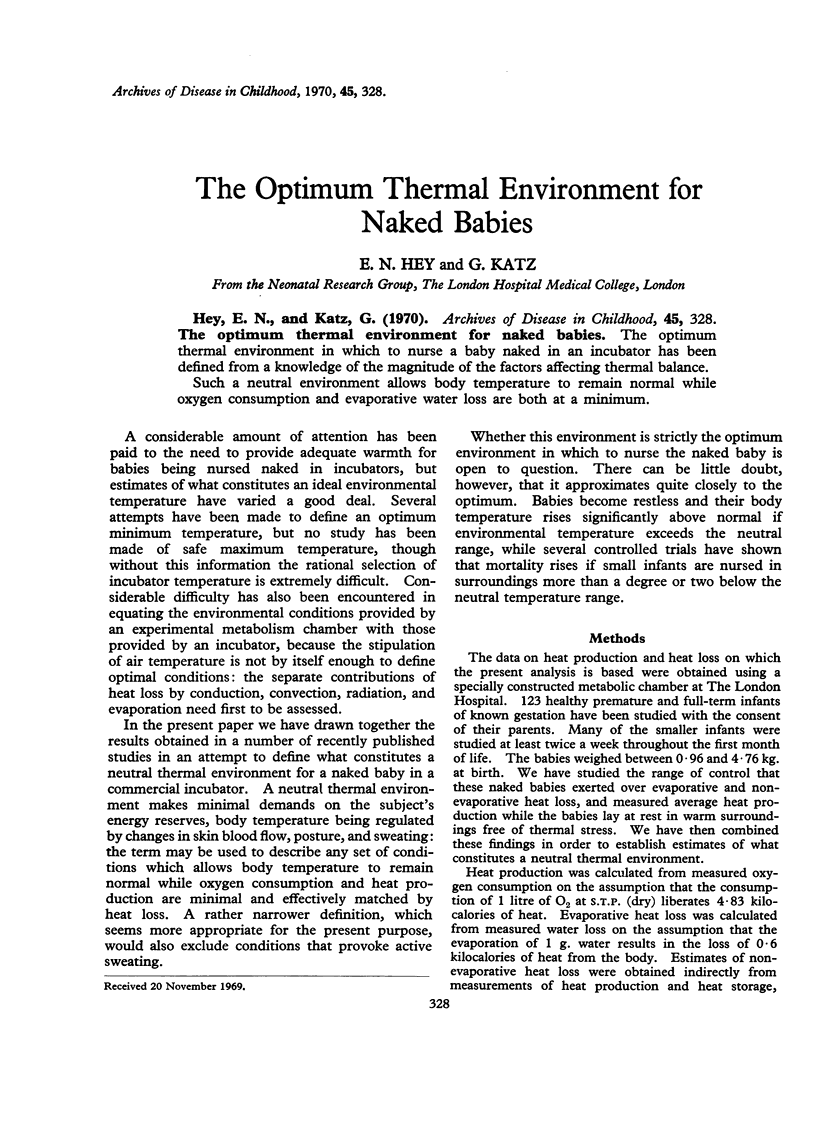
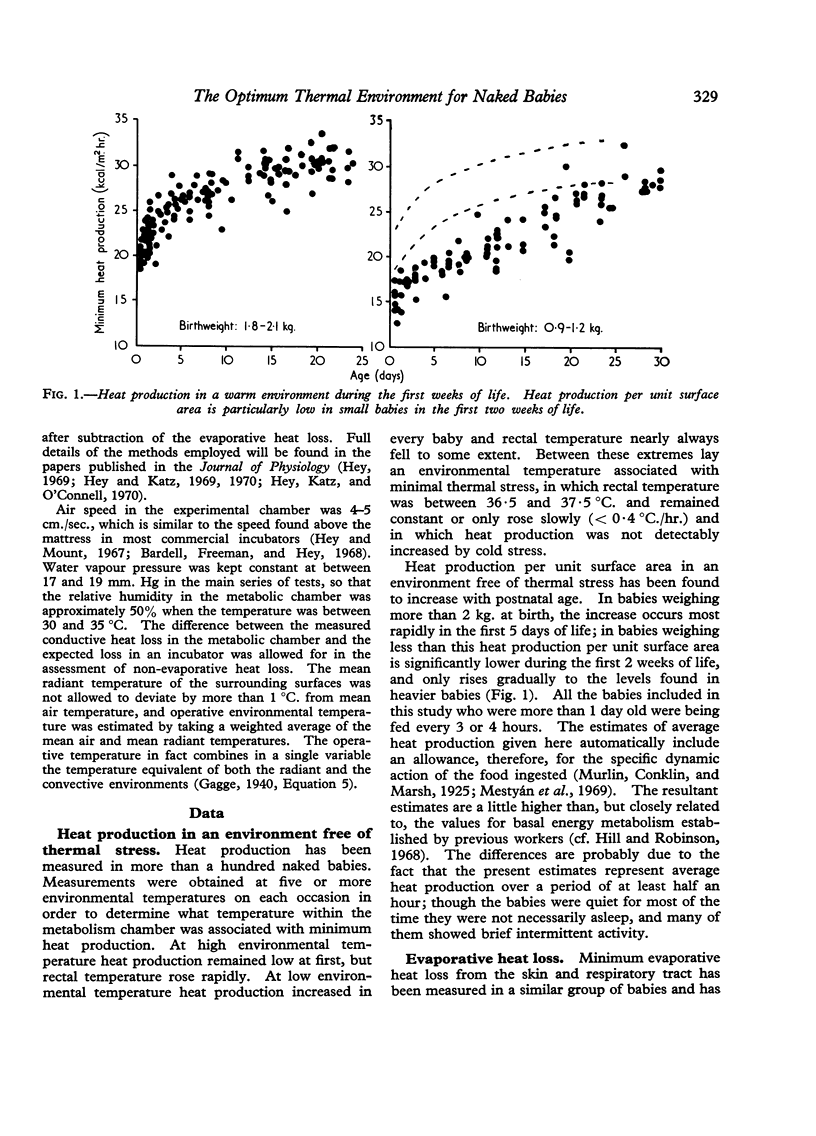
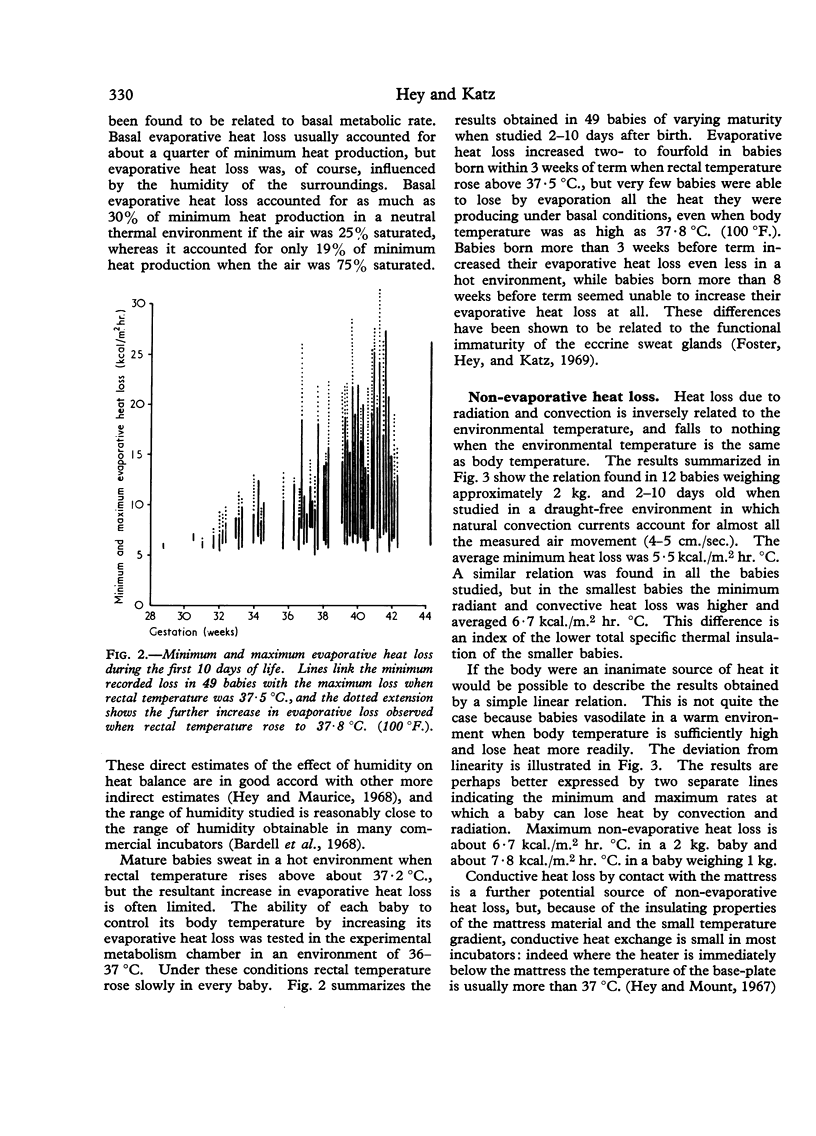
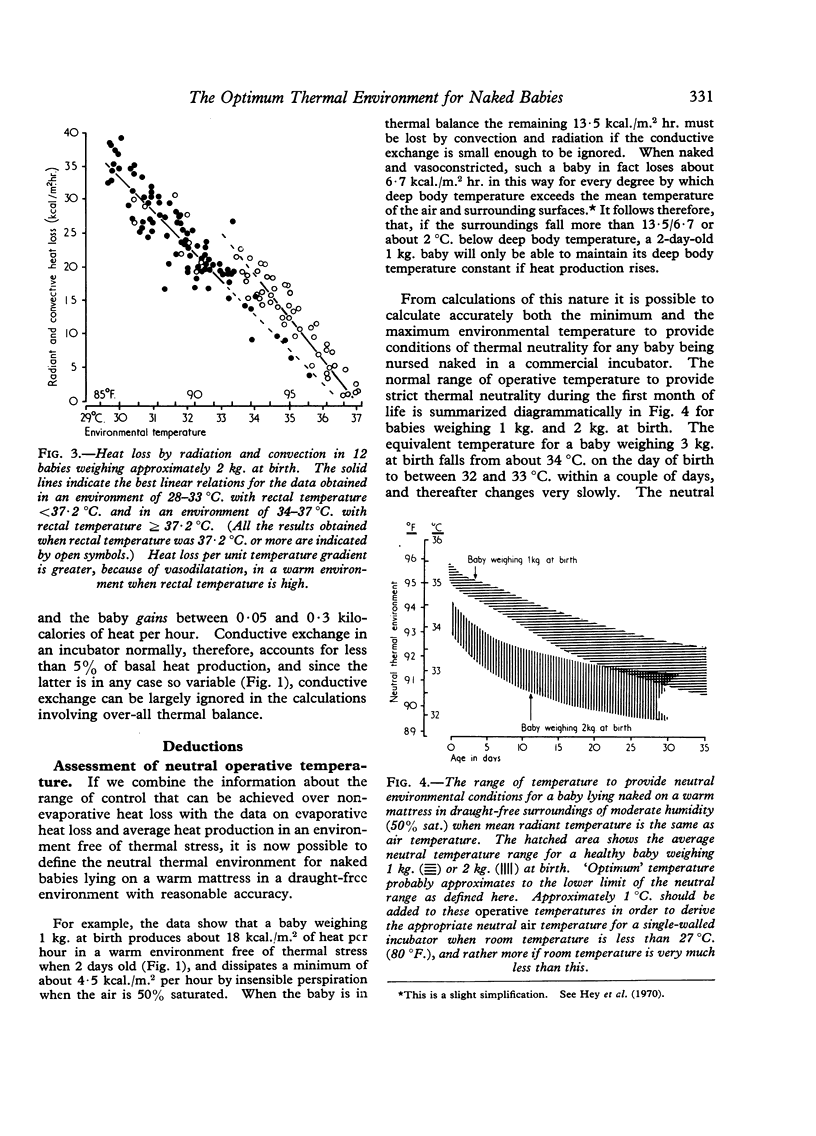
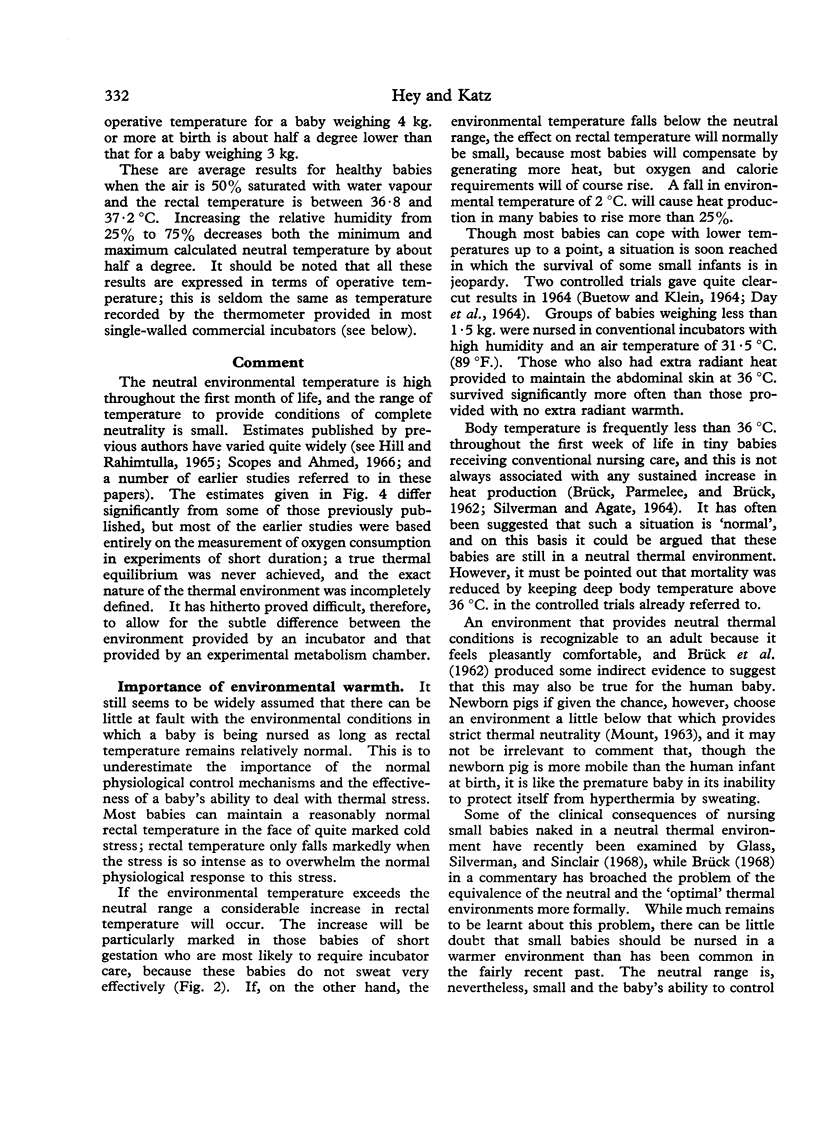
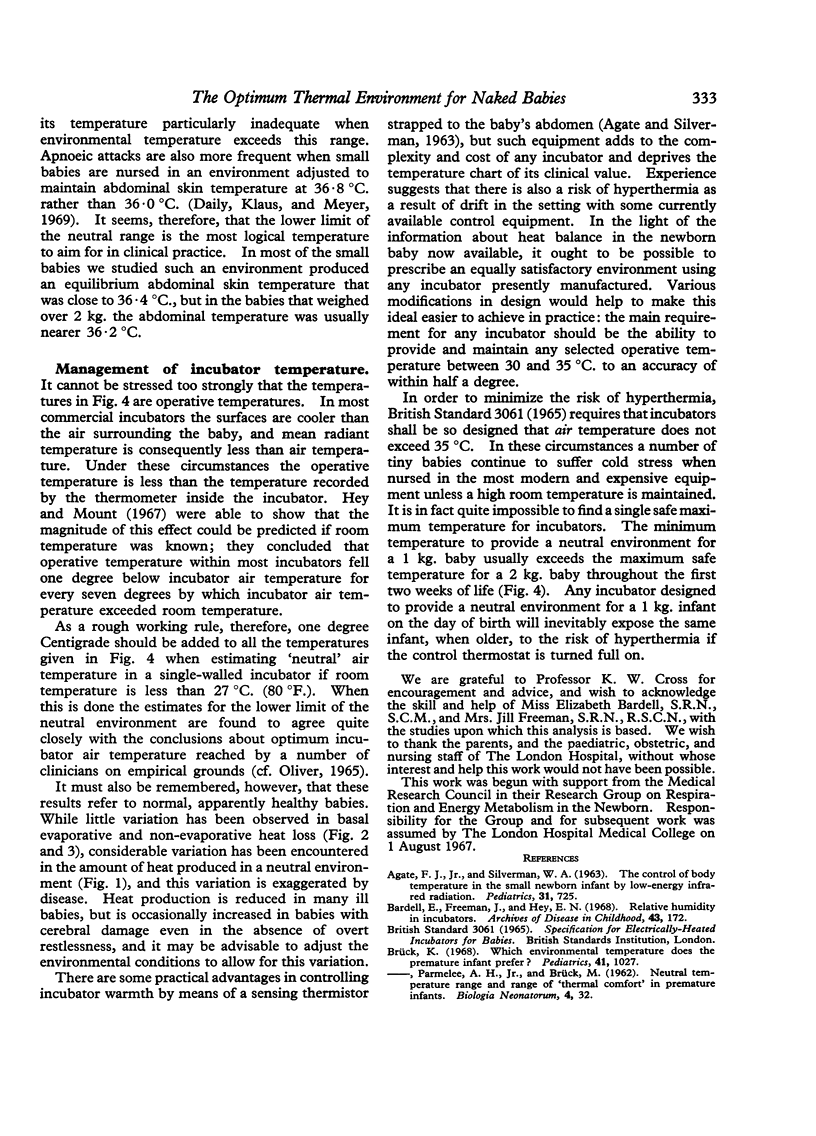
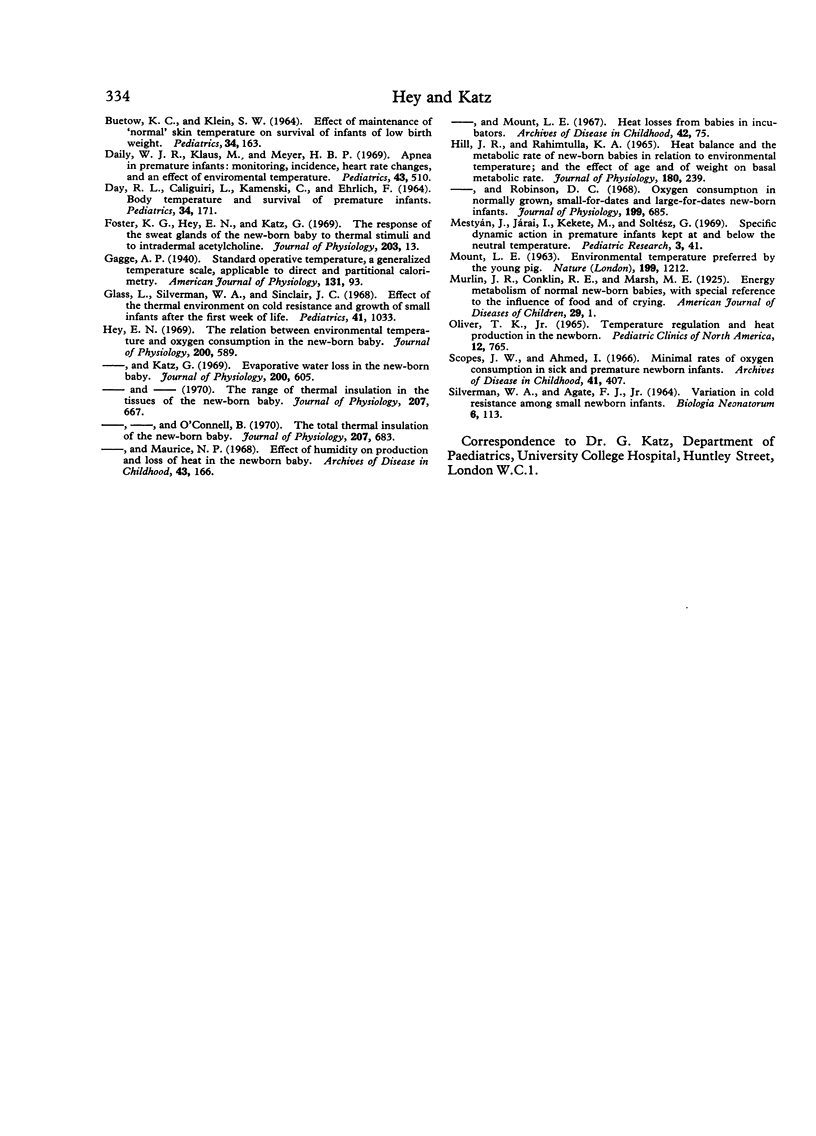
Selected References
These references are in PubMed. This may not be the complete list of references from this article.
- AGATE F. J., Jr, SILVERMAN W. A. The control of body temperature in the small newborn infant by low-energy infra-red radiation. Pediatrics. 1963 May;31:725–733. [PubMed] [Google Scholar]
- BUETOW K. C., KLEIN S. W. EFFECT OF MAINTENANCE OF "NORMAL" SKIN TEMPERATURE ON SURVIVAL OF INFANTS OF LOW BIRTH WEIGHT. Pediatrics. 1964 Aug;34:163–170. [PubMed] [Google Scholar]
- Bardell E., Freeman J., Hey E. N. Relative humidity in incubators. Arch Dis Child. 1968 Apr;43(228):172–177. doi: 10.1136/adc.43.228.172. [DOI] [PMC free article] [PubMed] [Google Scholar]
- Brück K. Which environmental temperature does the premature infant prefer? Pediatrics. 1968 Jun;41(6):1027–1030. [PubMed] [Google Scholar]
- DAY R. L., CALIGUIRI L., KAMENSKI C., EHRLICH F. BODY TEMPERATURE AND SURVIVAL OF PREMATURE INFANTS. Pediatrics. 1964 Aug;34:171–181. [PubMed] [Google Scholar]
- Daily W. J., Klaus M., Meyer H. B. Apnea in premature infants: monitoring, incidence, heart rate changes, and an effect of environmental temperature. Pediatrics. 1969 Apr;43(4):510–518. [PubMed] [Google Scholar]
- Glass L., Silverman W. A., Sinclair J. C. Effect of the thermal environment on cold resistance and growth of small infants after the first week of life. Pediatrics. 1968 Jun;41(6):1033–1046. [PubMed] [Google Scholar]
- Hey E. N., Katz G. Evaporative water loss in the new-born baby. J Physiol. 1969 Feb;200(3):605–619. doi: 10.1113/jphysiol.1969.sp008711. [DOI] [PMC free article] [PubMed] [Google Scholar]
- Hey E. N., Katz G., O'Connell B. The total thermal insulation of the new-born baby. J Physiol. 1970 May;207(3):683–698. doi: 10.1113/jphysiol.1970.sp009088. [DOI] [PMC free article] [PubMed] [Google Scholar]
- Hey E. N., Maurice N. P. Effect of humidity on production and loss of heat in the newborn baby. Arch Dis Child. 1968 Apr;43(228):166–171. doi: 10.1136/adc.43.228.166. [DOI] [PMC free article] [PubMed] [Google Scholar]
- Hey E. N. The relation between environmental temperature and oxygen consumption in the new-born baby. J Physiol. 1969 Feb;200(3):589–603. doi: 10.1113/jphysiol.1969.sp008710. [DOI] [PMC free article] [PubMed] [Google Scholar]
- Hill J. R., Rahimtulla K. A. Heat balance and the metabolic rate of new-born babies in relation to environmental temperature; and the effect of age and of weight on basal metabolic rate. J Physiol. 1965 Sep;180(2):239–265. doi: 10.1113/jphysiol.1965.sp007701. [DOI] [PMC free article] [PubMed] [Google Scholar]
- Hill J. R., Robinson D. C. Oxygen consumption in normally grown, small-for-dates and large-for-dates new-born infants. J Physiol. 1968 Dec;199(3):685–703. doi: 10.1113/jphysiol.1968.sp008673. [DOI] [PMC free article] [PubMed] [Google Scholar]
- MOUNT L. E. ENVIRONMENTAL TEMPERATURE PREFERRED BY THE YOUNG PIG. Nature. 1963 Sep 21;199:1212–1213. doi: 10.1038/1991212a0. [DOI] [PubMed] [Google Scholar]
- OLIVER T. K., Jr TEMPERATURE REGULATION AND HEAT PRODUCTION IN THE NEWBORN. Pediatr Clin North Am. 1965 Aug;12:765–779. doi: 10.1016/s0031-3955(16)31744-8. [DOI] [PubMed] [Google Scholar]
- SILVERMAN W. A., AGATE F. J., Jr VARIATION IN COLD RESISTANCE AMONG SMALL NEWBORN INFANTS. Biol Neonat. 1964;6:113–127. doi: 10.1159/000239891. [DOI] [PubMed] [Google Scholar]


